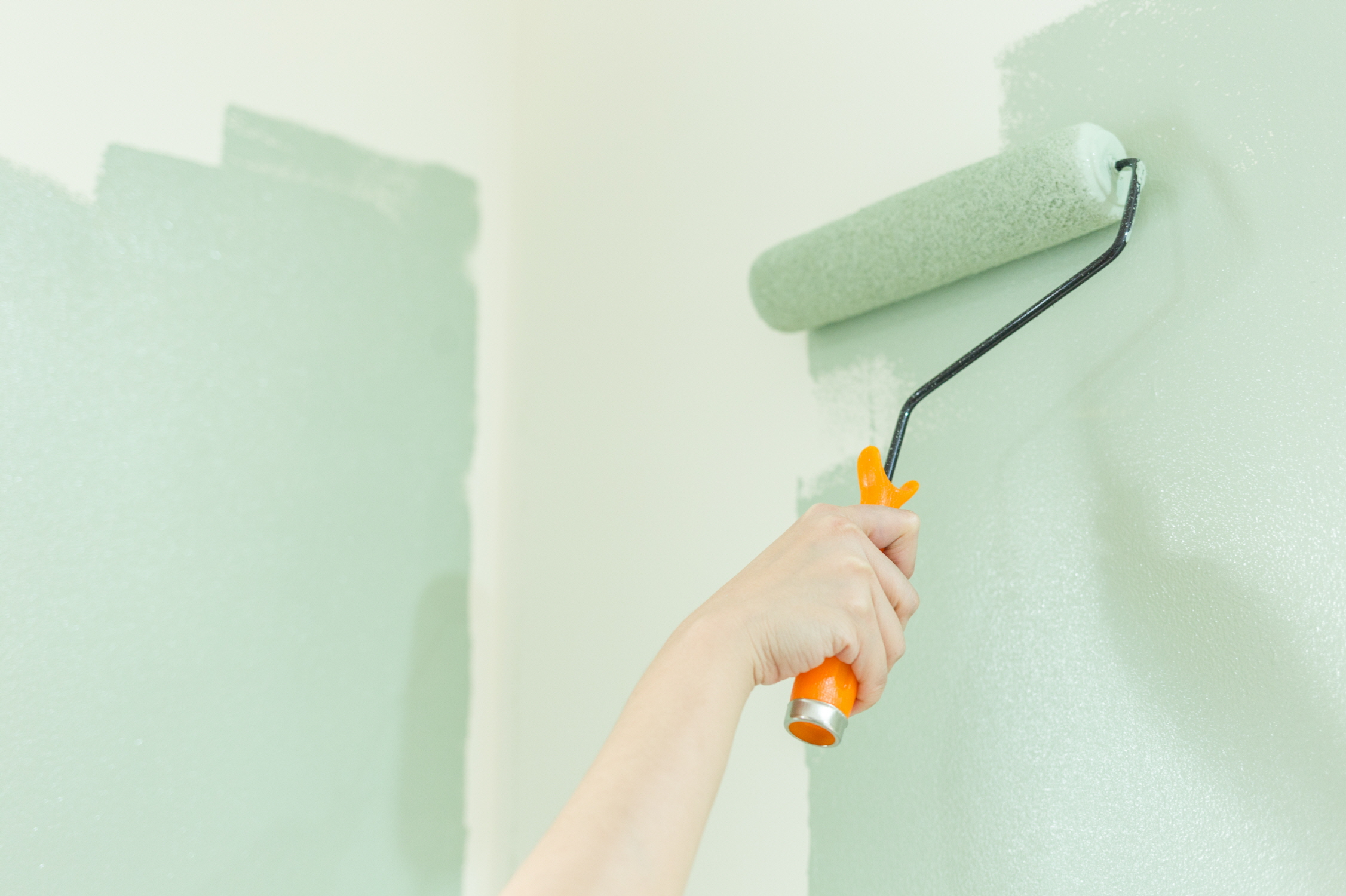Top 10 Amenities Renters Can’t Resist

To be a successful landlord, you need to give your tenants what they want.
Think of it this way: You wouldn’t want to be in the surfboard business in the Midwest, but you might in a Southern California beach community.
It’s the same for the landlord business. Buying rental property is only one part of the equation for success. If your property is as appealing as that Midwestern surfboard, it’s not doing you much good.
To be successful, you need to provide a rental product that people want to rent, and to be really successful, they should want to stay in it for as long as possible. Here are 10 things renters can’t resist.
1. Walkability
A great location means different things to different people. But if your rental property has a high Walk Score, a measure of a location’s walkability, it’s a safe bet you’ve got a good location.
There’s a shift in this country toward moving to urban areas, but not necessarily the traditional ones, such as New York City and San Francisco. Renters just want to walk to restaurants, shops, schools, parks, and entertainment, no matter which city they’re in.
A Walk Score between 50 and 100 means some or most amenities are within walking distance, and a score between 0 and 50 means the property is car dependent.
2. A Well-Maintained Place
One of the big advantages to being a renter versus a homeowner is that renters don’t have to worry about maintenance and repairs. That’s the responsibility of the owner or management company. So when you’re showing a place, be sure there are no maintenance issues.
When you’re showing a place, make sure there are no maintenance issues.
And when a tenant moves in, conduct periodic inspections to ensure your rental unit remains in great shape. You or your management company also needs to be responsive when a repair needs to be done.
3. A Place to Park
Renters want off-street parking, and that’s a feature they don’t necessarily get in a building in an urban area. So if you have a single-family home with a garage, play up this feature. If you don’t, any off-street parking, such as a covered area or a driveway, is a great selling feature. In the suburbs, renters are fine with street parking since it’s typically easy to find parking in front of the property.
4. Storage Space/Walk-in Closets
If your rental unit has enormous walk-in closets, you’re sure to impress potential tenants. But if you don’t have this feature, you might want to consider having one built in. A bigger closet in a smaller bedroom is usually a bigger draw than a tiny closet in a spacious bedroom. And any additional storage space is always welcomed.
5. Washer/Dryer
Tenants want a washer/dryer in their rental unit. Although this is an extra amenity that you’re not required to offer, it makes your unit more desirable to renters if you do. Some renters have their own washer/dryer, or don’t mind getting their own, so if you have a laundry room or a place to hook up a washer/dryer, that’s better than nothing.
6. Air Conditioning
By air conditioning, we mean central air, not a window unit. But this amenity varies depending on where your rental property is located. In a hot, humid climate, central air is a must-have feature. Window units are not ideal in humid climates because they tend to sweat, adding even more moisture to the home. And the seal around the windows is not perfect when you have an AC installed in the window, which is not energy-efficient.
7. Flexible Pet Policies
Lots of people have pets, making a pet-friendly place desirable for many renters and a must-have feature for others. Sixty-five percent of people own a pet, according to the National Pet Owners Survey. The most popular pets are overwhelmingly dogs and cats. If you decide to allow pets, here’s some further reading on best practices:
- The Definitive Guide to Renting to Tenants with Pets
- Pet Deposits, Pet Fees and Pet Rent — What’s the Difference?
8. Security and Safety
At the very least, you should reassure renters that you always change the locks between tenants. And, of course, you can’t just say this — you have to actually follow through with it. Besides changing locks, make sure your property has proper outdoor lighting, a wooden dowel for the bottom of sliding glass doors, deadbolt locks, and either provide an alarm system or let your tenant add one if they want to.
9. Outdoor Spaces
Although many renters like amenities, such as a pool with a cabana and a fitness/yoga studio (like many apartment complexes have), what even more renters prefer is outdoor space — a fenced-in yard, patio, deck, or balcony are all desirable to renters. When it comes to outdoor spaces, something is better than nothing.
10. A “Smart” Home
This feature typically won’t be a deciding factor for most renters, but if you have smart features, it’s a bonus, especially for millennial renters who love technology. The Internet of Things (IoT) allows devices to “talk” with each other, which makes it possible for technology to work for us.
Temperature controls that allow homes to heat up before you come home, a place to plug in your electric car, and lights that go on as you enter the room are all examples of what smart devices can offer. Nest is the leading provider of smart thermostats, but there are others for less money.
Which features help rent your place? If you’re a renter, what features are your must-haves? Let us know in the comments!
Credit to Laura Agadoni
Laura Agadoni is a landlord and journalist whose articles appear in various publications such as Trulia, The Houston Chronicle, The Motley Fool, SFGate, Zacks, The Penny Hoarder and azcentral.

You don’t need MAGIC to sell a HOME
8 Dating Rules That Apply to Real Estate

So much of our lives are online nowadays. Our social lives happen in online communities as much or more than in friends’ basements or bars. We meet people with similar interests by joining Facebook groups or following someone’s story on Snapchat. YouTube is where we learn to do almost everything, from simple home maintenance tasks to cooking dinner for the family.
Home shopping, like dating in the 21st century, almost always starts online as well. They’re both about finding the right one—and just like a matchmaker, house hunters turn to you to help them wade through the pool of eligible homes and find the one of their dreams. Here are eight ways online dating and home shopping are exactly the same and what your role is as the matchmaker.
- Knowing their price range is like knowing who is in their league. You have to help your client be as realistic as possible here. In the dating world, it’s a waste of time always going after people who you know won’t give you a chance. In a home search, there’s no point in lusting after houses you’ll never be able to afford. Be a good wingman for your client and only introduce them to prospective properties they have a serious chance with.
- Be sure they’re ready to move on. Buying a home is a long-term commitment; is your client ready for something long-term? Help your client get prequalified — it’ll show they’re ready to move on from their current home or apartment. In other words, make sure they’re over their last real estate love. Ask them for a sign they’re not just pretending to be ready to move on.
- Don’t be superficial. Ever met a date who looked nothing like the online photo? Well, homes sometimes also look way better online than they do in person. Before agreeing to take them on a home tour, ask your client to name something not related to aesthetics that draws them to the home. Then you’ll know a deeper connection is possible.
- Don’t make decisions based on first impressions. After they meet in person, your client may think the house is as awesome as it appeared online. But encourage your client to take it slow before making a commitment. Keep them grounded by pushing them to do an inspection (or maybe more than one) to make sure the home isn’t hiding any dark secrets inside.
- Don’t second-guess your heart (or gut). Love at first sight is rare, but it happens. It’s possible your client will find the home of their dreams in the first property they see. If this is the case, don’t try and rationalize or talk them out of their decision. But do make sure they take the necessary precautions before jumping into this new real estate relationship.
- Ask if others see in the home what your client sees. Are you worried your client is being blinded by the twinkle in the windows and the sparkle in the backyard pool? But you think the home is just a pig wearing lipstick? Tell your client to bring their friends, parents, and others they trust to a second showing. They’ll see right through any facade and help your client avoid falling for the wrong house.
- Celebrate once they’ve sealed the deal. Once your client closes the transaction and walks down the aisle and into their new home, congratulate them and come to their housewarming party to show your support for their new status as a homeowner.
- Help them maintain a lifetime of happiness. Show your clients steps they can take to care for their home so they don’t fall on hard times. Give them resources to keep up with home maintenance and make sure they know never to ignore problems that may pop up. This will help your clients have an enduring home that comforts them and their families for years to come.
Mary McIntosh, GRI, AHWD, is associate broker at ProSmart Realty in Gilbert, Ariz., and has been selling real estate since 2002. Her motto is: “Always look for ways to better serve your clients and keep them laughing throughout the process.”

Thinking of MOOving?
7 Affordable Upgrades for Your Rental Properties

You can put many aspects of owning and managing rentals, such as rent collection, on autopilot. But not everything.
Property maintenance and upkeep can eat into your revenue and cause stress, and occasionally, make you wish you weren’t a landlord. The good news: there are easy and affordable ways to keep up your property and increase your cash flow at the same time.
I bought my first house when I was 22, and I’ve enjoyed success (with a couple of failures) by investing in real estate. Along the way, I discovered these affordable upgrades for rental properties.
1. Replace Cabinet Doors
Most people consider replacing worn-out cabinets entirely. But you can replace just the cabinet doors with high-quality, solid wood doors, as well as the hinges and knobs. Then you can paint the doors.
Jen from The Thrifty Home documents her re-painting experience, and she shares before and after pictures of her kitchen.
Tip: Don’t try to use Ikea cabinet doors on non-Ikea cabinet frames.
Potential Cost: $1,000 – $3,000
2. Add a Fresh Coat of Paint
The improvement with the highest ROI is a bucket of paint.
Painting has the highest return on investment for any rehab budget. However, you can enjoy an even higher return on investment by buying paint in bulk.
A lot of investors buy badly mixed paint that paint stores and hardware stores sell at a steep discount. The problem with buying these kinds of paint, when you’re working on a large-scale, is if you have to do any touch-up work, it’s a nightmare to match paint.
I highly recommend you negotiate a discount for a large bulk order of paint. You should be able to get another discount by opening a company account where you buy paint.
Potential Cost: $100 – $1,000
3. Replace Doors
Doors tend to get damaged at rental properties. Most investors either ignore this damage or cover it up with some touch-up paint. However, new doors dramatically increase the visual appeal of a rental unit, and they aren’t that expensive.
I get my doors at my local hardware store and don’t pay any more than $80 a piece for them. You should also check with a local building supply company, which may have extra doors at a deep discount.
With a little help, you can install a new door without changing the frame.
Potential Cost: $500 – $5,000
4. Pressure Wash
People will spend tens of thousands of dollars on renovations, but won’t pay to properly clean the outside of a house. Pressure washing a property makes a big difference in how a home looks.
I usually pay about $250 to have a house pressure washed. Or you can do it yourself. It’s easy to pressure wash a house with a long wand.
Potential Cost: $100 – $300
5. Landscape
Landscaping can directly reduce your vacancy rate. If you’re willing to a do a little work yourself, landscaping materials can be inexpensive. Whenever I have a hard time renting out a property, I buy some flowers to put outside.
Within a week, I have the property rented. This could be due to other factors, but the cost for flowers is less than $40. So now I make it a practice to have nice flowers when weather permits.
Potential Cost: $100 – $500
6. Install Wood Flooring
Choosing carpet for a rental property is a rookie mistake. Carpet is NEVER a good option. Carpet gets stains and looks dingy after minimal wear (especially with cheap carpet). In my experience, carpet in my rental properties needs to be replaced every five years.
Wood flooring is more affordable than most people realize. Shop around, and you may be able to buy flooring for about the same price as an expensive piece of carpet. The best part about wood flooring?
- Tenants love wood flooring.
This will help your property standout compared to other rental properties they are considering. - Wood flooring rarely needs to be replaced.
This is a huge cost advantage for you. And wood flooring is fairly easy to fix when necessary.
Tip: Light-colored hardwood doesn’t show scratches as much as dark hardwood floors.
Potential Cost: $3,000 – $10,000
7. Add Backsplashes
Backsplashes add value to your properties. They are durable and easy to clean. You need to be careful with the type of backslash you choose, however, because some backsplashes date a property.
Choose a classic look that is timeless, and avoid trendy colors. For example, white subway tiles make a good choice; frosted turquoise, not so much.
Bonus: Offer a Washer/Dryer
This upgrade pushes the boundaries of affordable. However, I’ve experienced a good return on this investment. I routinely add an extra $50 to $80 per month in rent for a stackable washer/dryer.
I buy my washer/dryer combinations from Craigslist for $100-$150. However, you can get a brand-new one from Amazon for around $600. I’ve also bought new kitchen appliances from Appliance Connection, and I’ve been very pleased.
Potential Cost: $150 – $600
Other Ideas
I hope this gives you some ideas on affordable ways to upgrade your rental properties and achieve higher rent! Do you have other tips about reliable upgrades? Share them in the comments!
Credit to Jimmy Moncrief
Jimmy is a multifamily real estate investor and bank credit officer.

HAPPY Valentine’s Day
Doesn’t have to be a headache.
How to Deal With Noisy Tenants in Your Apartment Building

Every renter deserves peace and quiet. But people interpret “quiet” in different ways, which can lead to uncomfortable situations for landlords.
For example, consider this true story that I call “The Case of the Midnight Guitarist.” The landlord, a friend of mine who owns several properties in California’s San Lorenzo Valley, told me about a musician who lived in one of two rental units in a quiet, creek-side setting.
“One day I received a noise complaint from the tenants in one of the units. It seemed the renter in the other unit had a habit of unwinding from a long day at work by practicing guitar. Unfortunately, his guitar was electric and had to be plugged into an amplifier to be heard. He would play what he thought were peaceful riffs well into the night. My other tenants didn’t think the riffs were peaceful.”
My landlord friend asked the guitarist to wear headphones, but he refused. All the renters had signed a standard rental agreement that failed to address noise issues, so my friend faced a quandary: How to ensure that every tenant experienced quiet enjoyment without violating the guitarist’s rights?
What is Quiet Enjoyment?
An implied warranty between the tenant and landlord, a provision for “quiet enjoyment” may contain the word “quiet,” but that doesn’t necessarily proscribe noise. It simply means that the tenant is entitled to undisturbed use of the premises. Courts read this warranty into every lease, whether or not it’s expressly stated.
Among the benefits it guarantees are:
- Use of all amenities supplied with the unit.
If an appliance breaks, the landlord has to fix it. - Unimpeded access to the unit.
The landlord is expected to keep the driveway clear and all doors and lock sets in good working order. - Freedom from intrusion.
In the absence of lease violations or overt damage to the premises, tenants have a right to privacy, which includes freedom from an unreasonable number of landlord visits. - Peace and quiet.
The landlord must address any disturbing noise within his or her control, such as a chirping smoke alarm.
One Person’s Noise is Another’s Music
It’s difficult to make everyone happy all the time. In the case of the midnight guitarist, one set of tenants was disturbed. But the guitarist viewed the noise he created as inspiring. As far as he was concerned, his guitar playing constituted quiet enjoyment of the premises.
After my friend received several complaints, he voluntarily granted the aggrieved tenants a rent reduction to encourage them to stay. My friend lost money, because of his failure to address noise in the lease.
A properly worded lease can provide much-needed leverage.
The landlord’s bottom line was affected the most, because he failed to address noise in the lease.
Avoid Generic Rental Agreements
My friend used a generic California rental agreement downloaded from the internet. It contained no specific quiet enjoyment clause and did not address noise at all. Covering little more than rental payments, late fees, and security deposits, it left most other issues—such as maintenance and usage guidelines—open.
There’s nothing “free” about a free lease template. It’ll cost you thousands of dollars in damages.
More sophisticated leases usually contain a quiet enjoyment clause, but it generally covers the use of the unit itself—not the impact of the tenant’s use on other renters. It is possible, however, to include language concerning noise in that clause. Moreover, the clause can contain a caveat, such as “subject to all terms and provisions of this lease,” and the lease can address potential disturbances in a separate clause.
Enforce Quiet Hours
An effective way to ensure equal enjoyment of quiet time for all tenants is to specify hours during which noise is to be kept to a minimum. These hours may differ on weekdays and weekends, but they typically begin at 10 p.m. The lease should specify that “quiet time” applies to guests as well as tenants.
Also check with your local county or town code enforcement office. They might already have noise ordinances in place, which you could enforce. The great thing about noise ordinances is that if a tenant doesn’t comply, you can call the police and they will enforce it for you.
Resolving Disputes
Even if all renters agree to a “quiet hours” clause, it can be difficult to resolve a dispute. Different people tend to have different noise thresholds.
Landlords typically use some of the following criteria to help them adjudicate noise complaints:
- Multiple complaints.
Has more than one tenant complained? Multiple complaints carry more weight than one from a (possibly oversensitive) individual. - Recurring issues.
Are complaints recurring? This points to a pattern of willful disturbance. - Source of the noise.
Is the noise a product of everyday activities? An 80% carpet rule can help prevent noise disturbances in the case of multistory dwellings. - Actions to remedy.
Have any steps been taken to address the source of the noise? The Midnight Guitarist, for example, may have tried turning down the volume. - Documentation and credibility.
Has the complaining tenant documented instances of disturbances? Dates, times, and estimates of noise levels are all helpful.
Penalties
The quiet hours lease clause should also specify penalties for violation. Eviction should be an option but not the only one. A monetary penalty should prevent recurrences in most cases.
A Sample “Quiet Enjoyment” Clause
While the exact language to use in a quiet hours clause may vary from state to state, a typical one might look something like the following:
Quiet Enjoyment. The tenant may live in and use the apartment without interference subject to this lease. Tenant may not disturb the quiet enjoyment of any other tenant in the building or surrounding neighbors. The tenant is responsible for adhering to the building’s quiet hours. Quiet hours are from (Insert Quiet Hours for Property) on weekdays and from (Insert Quiet Hours for Property) on weekends. If tenant violates the quiet hours policy on three separate documented occasions, the tenant is in violation of the lease agreement. The landlord reserves the right to charge the tenant a penalty of $ (Insert Dollar Amount) and/or evict the tenant, the decision of which is the sole right of the landlord.
Credit to Chris Deziel
Chris has owned and managed 4 rental properties in Santa Cruz, CA, and Salida, CO. He is a DIY handyman expert for popular sites like Pro Referral.












